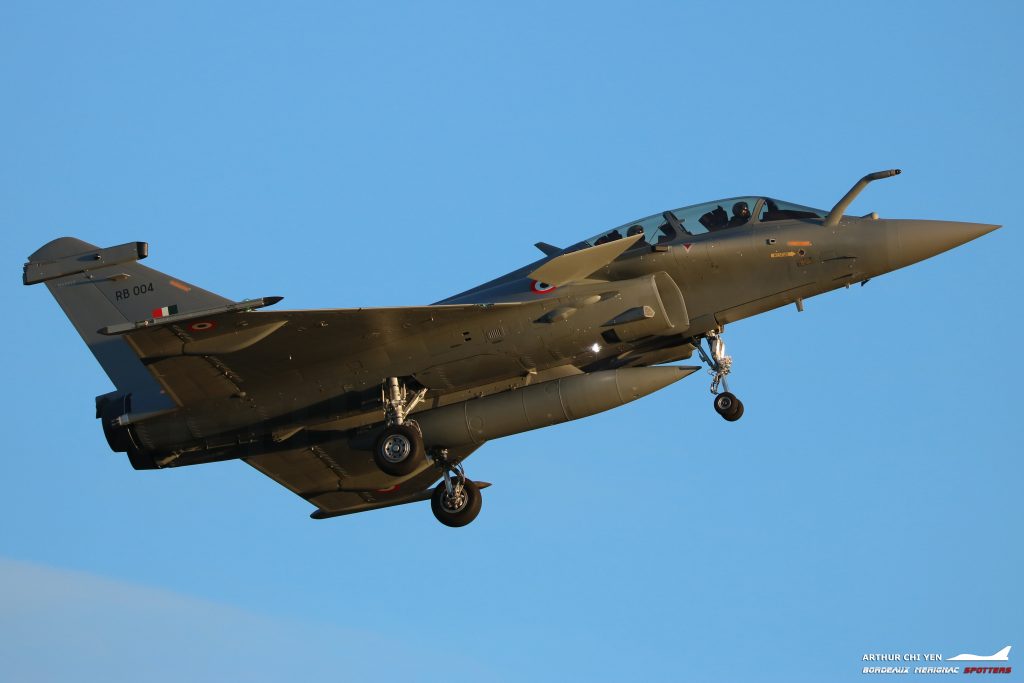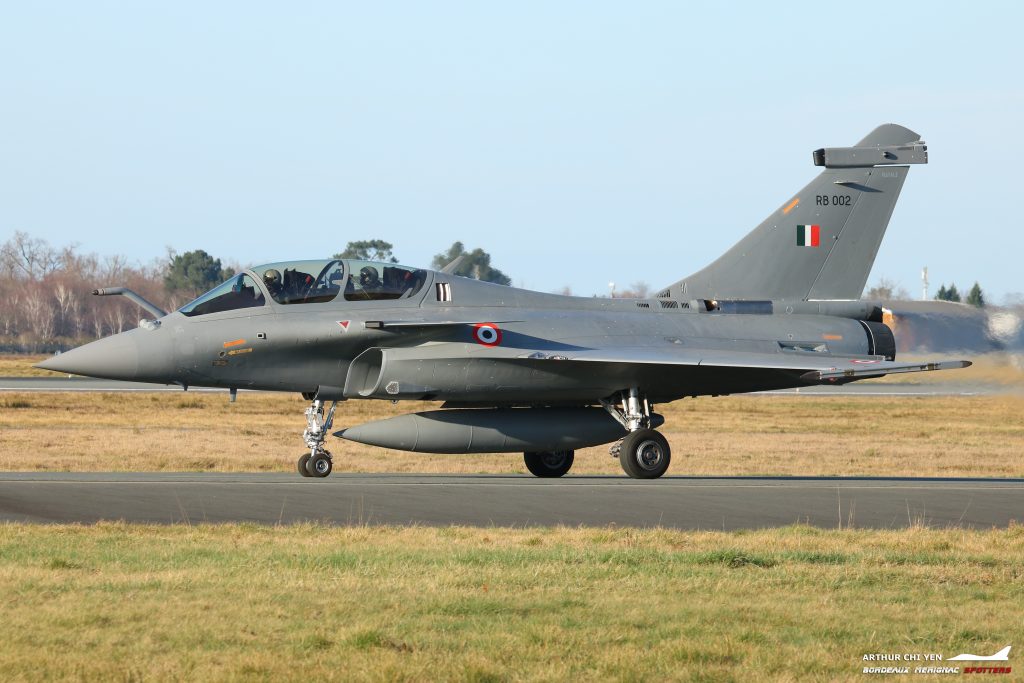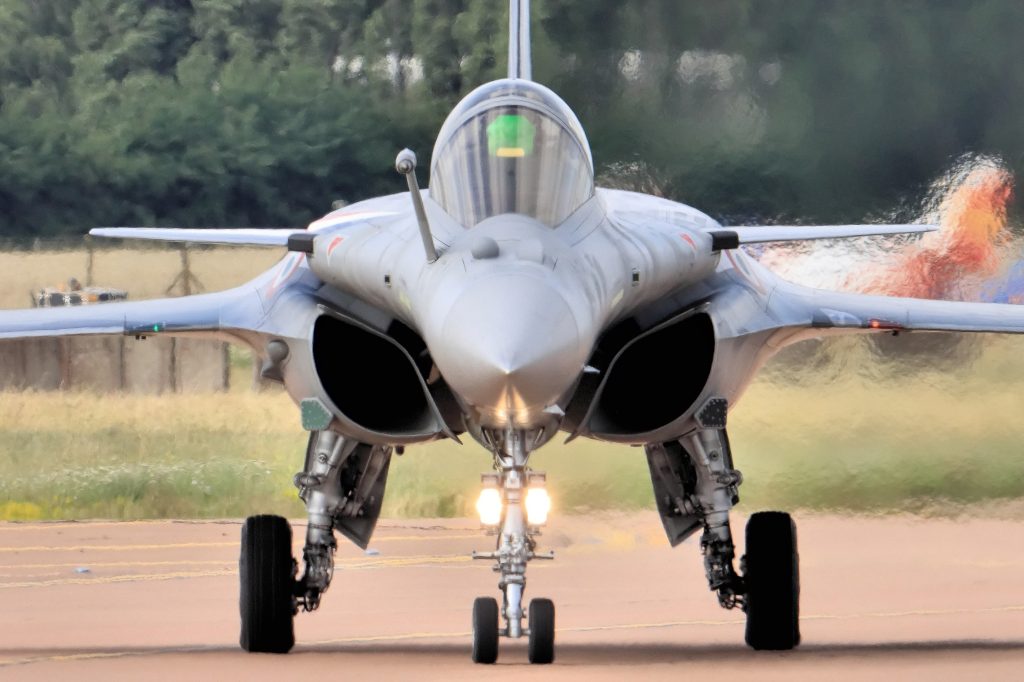By Bikram Vohra

With the ink on the second batch of 26 Rafale Ms for the carrier deck Indian forces are committed to making the French combat aircraft its future spearhead. The possibility of the numbers increasing to 187 units from the current committed sixty-two leaves the Air Force strong with the backup of 272 Su 30 multirole fighters for all-weather, air-to-air and air interdiction missions. Many of these are assembled by India. In November, this year. Recently, a tender has been issued to the HAL for buying the 12 Su-30MKI fighters, which will be manufactured in India by the HAL.
While it does strengthen the power in the air and moves India strategically away from the Russian grip could the options have been exercised to make the force even stronger.
The US being a military arcade where India passes by had offered the F18 Tomcat, an aircraft that has been tested and been praised as the ideal aircraft for the Vikrant. However, it is a bit old in the tooth and as production will halt in 2025 one can understand the reasons for letting it be.
Intriguingly the US had offered the F21, based very closely on the F16 Block 70, the F21 has upgraded radar and sensors and carries long-range missiles. Lockheed Martin markets it as the ideal carrier aircraft and have pushed very hard on making a deal with Tatas to manufacture the F21 in India.
The company supports its F-21 offering for procurement of 114 new fighter aircraft — exclusively for India and the Indian Air Force, thereby providing the IAF with more teeth.
In many ways, the Lockheed Tata nexus sets a very strong precedent for the private sector’s participation in military manufacture and these initiatives are a healthy sign in spurring the make in India sentiment.
There is in the same stable the F22 Raptor and it is nothing to sneeze at. The F-22 boasts air superiority capabilities, along with ground attack, electronic warfare, and signals intelligence functionalities.

The F-21 and Rafale are both advanced multirole fighter aircraft designed for a variety of mission profiles. If this deal has a successful conclusion the pot of gold could translate into access to fifth-generation F35.The F-35’s aligned edges, reduced engine signature, internal carriage of weapons and fuel and embedded sensors all contribute to its unique stealth performance. With that edge designed from day one, the F-35 has an unmatched ability to evade enemy detection and enter contested airspace. That carrot has been dangled and is a juicy one indeed. A couple of squadrons of F35s would give the Air Force further supremacy in the sky. The relationship between the two countries is opening and India could well get first dibs at major US weaponry. In the past decade, Washington has okayed sales of transport and maritime aircraft (C-130J Super Hercules, C-17 Globemaster IIIs, and P-8I Poseidons); transport, maritime, and attack helicopters (CH-47F Chinooks, S-61 Sea Kings, MH-60R Seahawks, and AH-64E Apaches); Harpoon anti-ship missiles; and M777 howitzers.
The F-16 Block 70, on which the F-21 is based, features advanced avionics, radar systems, and electronic warfare capabilities. It is known for its agility, adaptability, and combat-proven record.
The Rafale is known for its versatility, advanced avionics, and weapon systems. It has been designed to perform a wide range of missions, including air superiority, ground attack, and reconnaissance. The Rafale is also capable of carrying a variety of advanced munitions and has a strong record in combat operations.

With its strength still depleted the IAF at present is chronically weak. What is officially sanctioned as forty-two combat aircraft squadrons. The existing fleet includes a mix of Rafale, Su-30 MKI, MiG-21, MiG-29, Mirage 2000, Jaguar, and Tejas aircraft.
The fear is that before things get better, they will get more bleak. The obsolete MiG-21s will be mothballed by 2025, and the Jaguars, MiG-29s, and Mirage 2000s are all operating on extended lifecycles which is not conducive to strength or safety.
There is often some logic stepping back into the space one is leaving. Peeved though the Russians might be over the desertion by their best customer the Russians have a big piece of cheese. That is the Su57. Although a litany of flaws and a huge 6-billion-dollar advance saw India walk away perhaps it has not yet slammed the door. To quote: “The AL-41F engines fitted to the Su-57 were unreliable. The radar was inadequate. The airframe was poorly built, with serious implications for the jet’s stealth profile.”
Once corrected and brought on par the Su57 is a fifth-gen frontline fighter. In fact, a joint production on Indian soil would be an incredible spike for India’s hardware manufacturing sector. The Su57 saves on training, has cross-crew qualifications with the Sukhoi family and quicker transitions. Moscow believes the Su57 is the answer to the US F-35, and Chinese J-20 Mighty Dragon. The plane is seen as a lethal weapon after suitable rectifications have been made. The Sukhoi Su-57 is designed to destroy all types of air, ground, and naval targets. It has increased stealth due to the broad use of composite materials and can reach a supersonic cruising speed. It is said to be equipped with the most advanced onboard radio-electronic equipment, including a powerful onboard computer (the so-called electronic second pilot). Its radar system is spread across its body, and its armament is placed inside its fuselage.
But the first-round experience has made India cagey. So, it might just hold back till the Su 75 Checkmate is a reality. Russia has already initiated the groundwork for manufacturing the stealth fighter aircraft, marking a crucial step in the production process for its single-engine fifth-generation fighter jet. Whether the pressures of the Ukraine war and costs will put a crimp in the timeline is still to be seen. It is a possibility that cannot be ignored.

For India time is of the essence. A depleted force becomes a vulnerable force. The need for an answer to China’s J 20 Mighty Dragon is imperative. Without that cherry on the cake, it is then compelled to make compromises and that is not healthy.
The much-maligned Tejas LCA has finally found the wind beneath its wings. Its performance envelope has stirred interest in six other countries but it is a bit of a stretch since even if HAL ramps up it still 24 units a year. With a target if 324 aircraft across the board for the IAF including a standing order for 83 aircraft it will be well into the 2030s for a full complement. That said every Tejas inducted into service is an addition to strength and firepower.
Bikram Vohra is the Consulting Editor of Indian Aerospace & Defence





